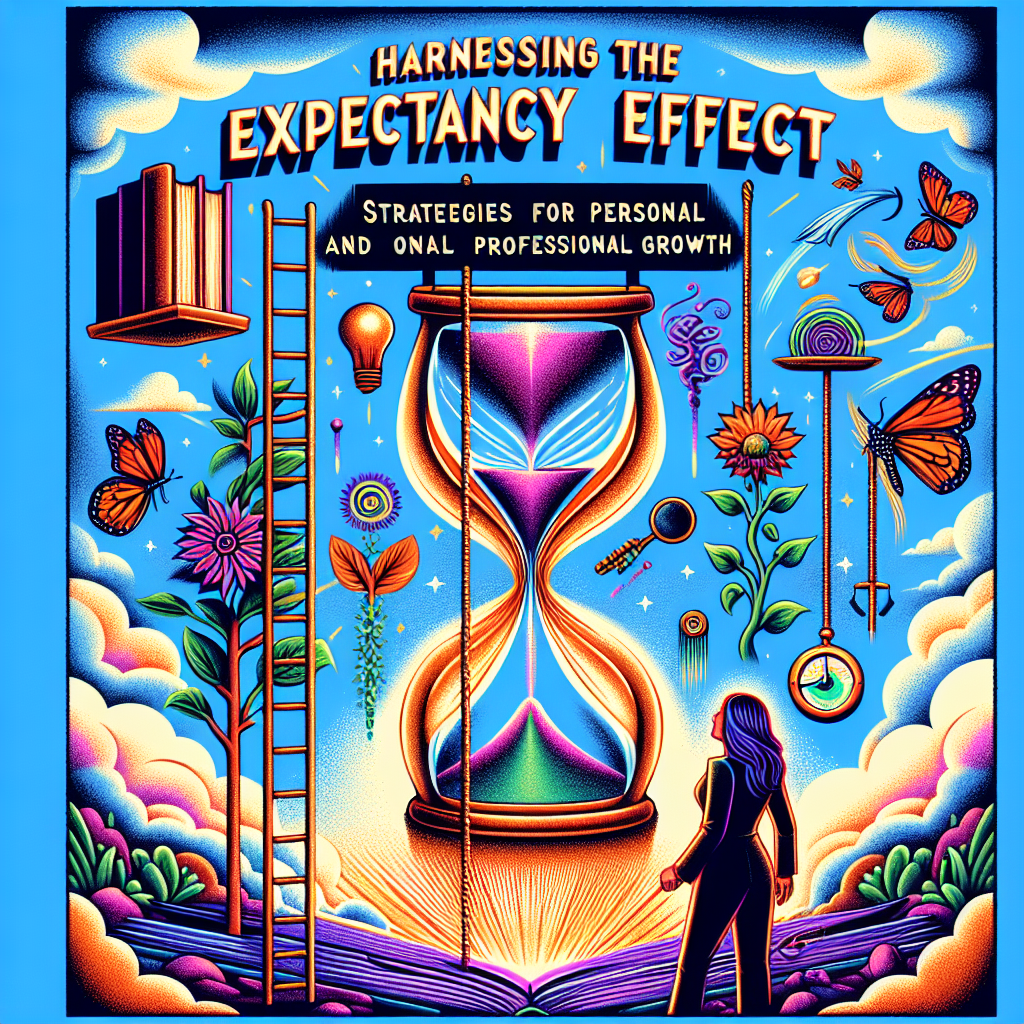
Introduction
Have you ever noticed how your expectations shape your experiences? Whether you’re stepping into a crucial meeting or embarking on a personal journey, the beliefs you hold can dramatically influence the outcomes you achieve. This phenomenon, known as the Expectancy Effect, plays a pivotal role in our lives, often determining not just how we perceive success, but how we achieve it. In this article, we’ll delve deep into Harnessing the Expectancy Effect: Strategies for Personal and Professional Growth, empowering you to leverage your expectations for transformative results in both your personal and professional spheres.
Understanding the Expectancy Effect
What Is the Expectancy Effect?
The Expectancy Effect, sometimes referred to as the Hawthorne Effect or self-fulfilling prophecy, asserts that higher expectations lead to improved performance. When you expect a positive outcome, your mindset and actions align to make it a reality.
Case Study: In sports psychology, studies have shown that athletes who believe in their training and capabilities often outperform those who harbor doubt. This principle can be applied to various life situations where belief can catalyze tangible results.
Psychological Foundations
At its core, the Expectancy Effect is rooted in cognitive psychology. When we set expectations, our brain’s reticular activating system prioritizes information consistent with those expectations, filtering out what doesn’t align. For instance:
- Positive expectations trigger motivation.
- Negative expectations can lead to anxiety and underperformance.
The Power of a Growth Mindset
To effectively harness the Expectancy Effect, adopting a growth mindset is essential. Carol Dweck’s theory suggests that believing in the ability to improve and grow fosters resilience and achievement.
| Table 1: Comparison Between Fixed Mindset and Growth Mindset | Fixed Mindset | Growth Mindset |
|---|---|---|
| Avoids challenges | Embraces challenges | |
| Gives up easily | Persists in the face of setbacks | |
| Sees effort as fruitless | Views effort as a path to mastery | |
| Ignores feedback | Welcomes feedback for improvement | |
| Feels threatened by others’ success | Finds inspiration in others’ success |
Strategies for Harnessing the Expectancy Effect
1. Set Clear, Positive Expectations
To initiate the Expectancy Effect, begin by setting specific and positive expectations. Clear goals provide direction and serve as a motivating force.
Action Step:
Write down your goals using positive language. Instead of “I want to stop procrastinating,” try “I will efficiently manage my time to achieve my goals.”
2. Visualize Success
Visualization is a powerful technique in sports and personal development that activates the same neural pathways as actual performance.
Case Study: Researchers at the University of Chicago found that individuals who visualized their success in a particular activity performed significantly better than those who didn’t.
Action Step:
Spend a few minutes each day visualizing your success in detail. Imagine how it feels, what you see, and who is around you.
3. Surround Yourself with Positivity
Your environment plays a critical role in shaping your expectations. Surround yourself with positive influences—people who encourage and inspire you.
| Table 2: Identifying Positive Influences | Type of Influence | Examples |
|---|---|---|
| Friends | Encourage personal growth | |
| Colleagues | Supportive professional feedback | |
| Online Communities | Motivational groups and forums | |
| Books and Media | Inspiring podcasts, biographies |
4. Practice Affirmations
Affirmations are statements that reinforce your beliefs about yourself. They can help shift your mindset from limiting beliefs to empowering ones.
Action Step:
Create a list of affirmations that resonate with your goals. Repeat them daily to instill a positive mindset.
5. Set Incremental Goals
Breaking down larger goals into smaller, manageable ones can create a sense of accomplishment, reinforcing your positive expectations.
Case Study: The SMART (Specific, Measurable, Achievable, Relevant, Time-bound) criteria for goal-setting have been shown to improve the chances of achieving goals significantly.
6. Embrace Failures as Learning Opportunities
Changing your mindset towards failure can transform your expectations. Each failure can lead to insights, growth, and eventually, success.
Action Step:
Analyze past failures without judgment. What did they teach you? How can you apply those lessons moving forward?
7. Engage in Continuous Learning
Adopting an attitude of lifelong learning instills confidence and helps maintain high expectations for growth and performance.
Case Study: Many companies that invest in continuous learning see boosts in employee satisfaction and productivity, thereby enhancing overall organizational performance.
8. Celebrate Small Wins
Recognizing and celebrating progress reinforces positive expectations and motivates ongoing effort.
| Table 3: Ways to Celebrate Small Wins | Method | Examples |
|---|---|---|
| Reward Yourself | Treat yourself after achieving a milestone | |
| Share with Others | Tell friends and family about your achievement | |
| Reflect on Progress | Keep a victory journal |
9. Seek Feedback and Adapt
Constructive feedback aids in recalibrating expectations and improving performance. Treat feedback as an opportunity for growth.
Action Step:
Regularly ask for feedback from peers or mentors and reflect on it to adjust your approach.
10. Leverage Accountability
Finding an accountability partner can significantly boost performance by keeping you committed to your expectations and goals.
Case Study: A study found that individuals who regularly report their progress to a partner are significantly more likely to achieve their goals compared to those who do not.
Conclusion
Harnessing the Expectancy Effect can unlock immense potential for personal and professional growth. By understanding how expectations influence actions and outcomes, you can transform not only your mindset but also your life. It’s essential to set clear and positive expectations, visualize success, embrace failure, and surround yourself with growth-oriented influences. Remember, your beliefs shape your reality—foster a mindset that propels you forward, and watch remarkable changes unfold.
FAQs About Harnessing the Expectancy Effect
1. What is the Expectancy Effect?
The Expectancy Effect is the phenomenon where individuals perform better when they have positive expectations. It’s a self-fulfilling prophecy that enhances achievement through belief.
2. How can I set positive expectations?
Start by defining clear, achievable goals and framing them in positive language to create a more motivating mindset.
3. Can visualization really help?
Yes! Visualization activates the same cognitive pathways as real experiences, enabling better performance in actual scenarios.
4. What role does feedback play in the Expectancy Effect?
Feedback helps you recalibrate your expectations, understand your progress, and make necessary adjustments to stay on track.
5. How can I measure my growth?
By setting incremental goals and celebrating small wins, you can create tangible measures of your progress towards your larger objectives.
Harness these strategies effectively, and you’ll be well on your way to experiencing the transformative power of Harnessing the Expectancy Effect: Strategies for Personal and Professional Growth.














